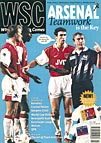 Despite having a rich history that includes Gordon Banks, Cris Freddi wonders if England is currently going through a dry spell in producing top-class goalkeepers
Despite having a rich history that includes Gordon Banks, Cris Freddi wonders if England is currently going through a dry spell in producing top-class goalkeepers
As far as I can see, this is the first era in which managers would rather go abroad for an erratic has-been like Bernard Lama than develop a young keeper who is likely to sod off as soon as his contract is up. Blame Bosman. They all do.
There has also been a sea change in the old British prejudice against foreign keepers since the arrival of Erik Thorstvedt, Hans Van Breukelen, Hans Segers and others in the Eighties. Long enough, certainly, to get in the way of promising young keepers qualified to play for England. Whether there is also a natural dearth of these at the moment, for other reasons, is harder to be sure about.
For a start, goalkeepers seem to whip up strong feelings. Two people can have wildly differing views on the same one (try Nigel Spink) – especially if there is any visible deterioration in their skills: Dave Beasant, Chris Woods, Gary Bailey, Ian Walker. It’s that much harder to convince someone who was good in the past and who wasn’t.
Try starting with the easy ones. In the early Seventies, someone as good as Jim Montgomery did well just to get into the England squad in the face of competition from Gordon Banks, Peter Shilton, Ray Clemence, Alex Stepney, Peter Bonetti, Jimmy Rimmer and Phil Parkes, with Joe Corrigan about to improve and Mervyn Day a gleam in the eye. Not to mention Bob Wilson and David Harvey, somewhat iffily capped by Scotland. There’s nothing like that spread of talent today.
Was this just a one-off, though? Some kind of golden age? Scratch the surface of other eras and you find a much shallower pool of talent than perhaps you would expect. The mid-Sixties had Banks, Bonetti, Tony Waiters, Peter Grummitt, the Springett brothers and Gordon West – but with the exception of Banks and perhaps Bonetti they all had severe defects: Ron Springett vulnerable from long range, West a sort of talented clown (‘tumbling bear’), Waiters short of the highest international class.
The Fifties, if anything, were even thinner on top. After the retirement of Frank Swift, Bert Williams of Wolves won 24 caps and Birmingham’s Gil Merrick 23. The first was sometimes brilliant, an original cat, but he wasn’t always safe, and he conceded a few too many goals while playing for England (34). Merrick, once highly rated, let in 30 in ten matches in his last international season. As for the overall standard, it was best summed up when England recalled Ted Ditchburn at the age of 35 and gave five caps to young Reg Matthews of Coventry. Peter Taylor, Brian Clough’s right-hand man and a goalkeeper himself, described Matthews as having “phenomenal ability” – but he was playing in the Third Division at the time, which suggests there was a bit of a vacuum higher up. Later, Colin McDonald (Burnley), Eddie Hopkinson (Bolton) and Alan Hodgkinson (Sheffield United) didn’t let England down but weren’t quite out of the top drawer. And the best of that generation, interestingly in view of today’s trend, was Bert Trautmann, Man City’s German POW.
The England keepers of the Thirties were better, but again the quality below the top few was doubtful. The reign of Birmingham’s Harry Hibbs was followed by Vic Woodley of Chelsea, who won 19 consecutive caps before the Second World War. Both were genuine world stars, and there was a decent supporting cast in Arsenal’s Frank Moss, Ted Sagar of Everton and the developing Swift. But even these were slow to adopt the new Continental habit of sweeping the penalty area.
David Seaman, Tim Flowers and Nigel Martyn more than hold their own in this company. Fully fit and at their best, all three have a certain stature and don’t look out of place in an England team.
But in the end it’s probably true that this is indeed our worst goalkeeping depression yet – and it started some time ago. That’s probably why Thorstvedt and the Dutchmen were brought over in the first place. At the 1990 World Cup, for instance, England were still relying on Shilton, one of the all-time greats but way past his peak, with Woods and Beasant as his understudies. And it seems to be getting progressively worse, with the foreign imports now doing to English goalkeeping what Allan Donald and a succession of West Indians have done for English fast bowling.
Compare and contrast with the turn of the century, when England capped ten different keepers in 25 games from 1899 to 1907, all apparently of the highest class. Big Jack Hillman was “one of the best goalkeepers England has ever produced,” but won only one cap; Jack Robinson’s “brilliant displays were garnished with sensational saves;” John Willie Sutcliffe (also a rugby international) and the great Sam Hardy set the standards for every England keeper to come.
More to the point, note the relative strength in depth of, say, the 1981-82 season, when QPR had Woods, John Burridge and Peter Hucker on their books, and Liverpool could choose between Clemence, Bruce Grobbelaar and Steve Ogrizovic. The fact that one of those is still appearing in the Premier League at 40 probably says it all.
From WSC 135 May 1998. What was happening this month